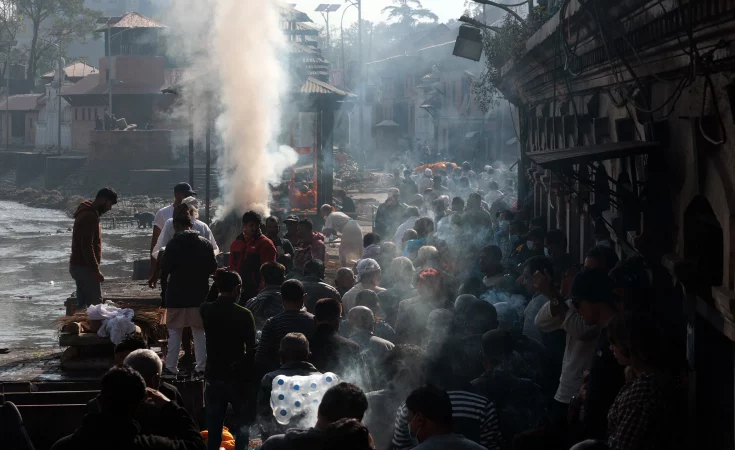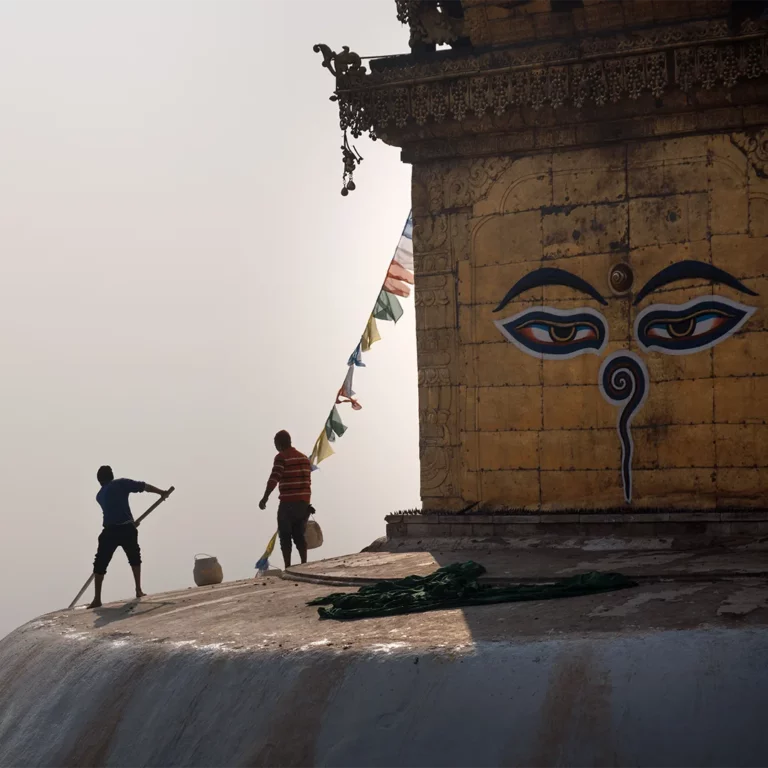Life is a beautiful circle with no beginning and no end. Sometimes we end up where we have already been just so we can try a different path. And that’s what I did; back to Kathmandu I decided to try another one! And, as we are talking about circles, did I mention that I originally came to Nepal to attend a thangka mandala school? This school is located in a small village close to Bhaktapur, 150 metres from the oldest Hindu temple of Nepal (1700 years old).
Art, faith and routines: 3 sides of the same coin
At the end of November I moved to the village of Changunarayan, 12 kilometres east of Kathmandu. 50 nepalese rupees lighter and 90 minutes after hopping on a local bus, I was dropped at the entrance of the village.
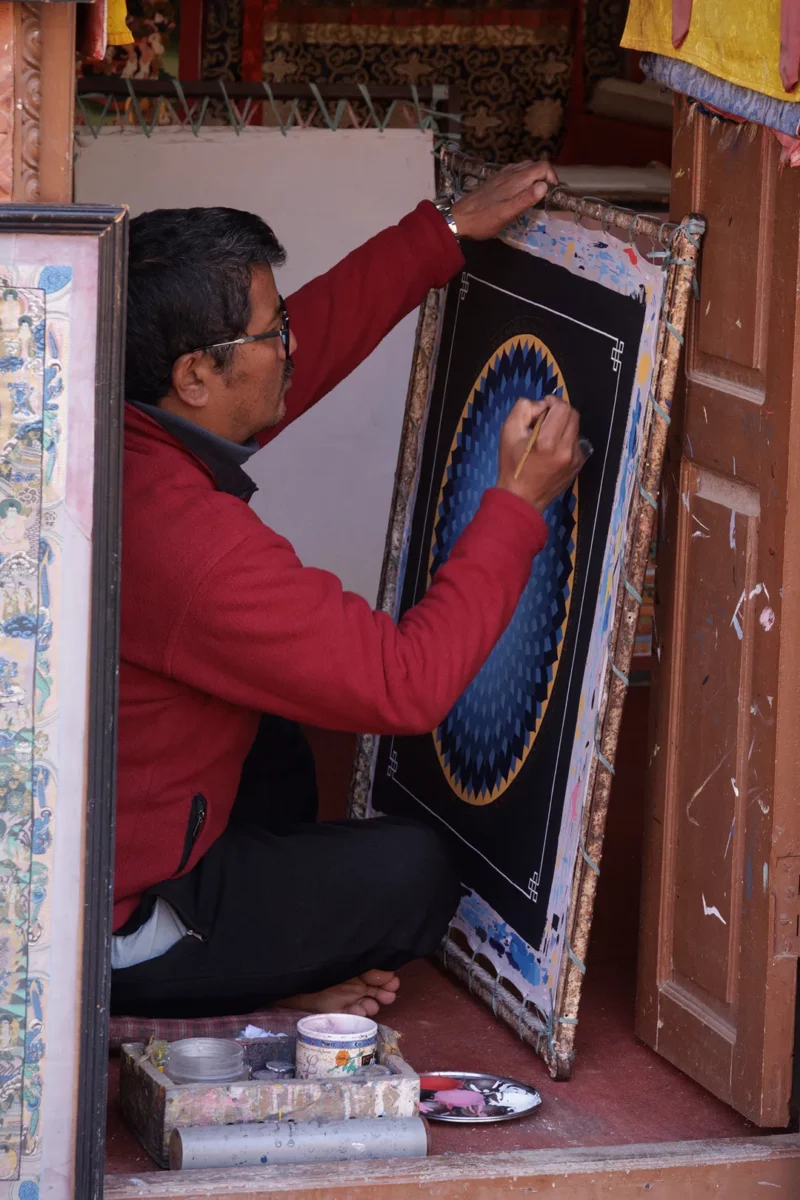
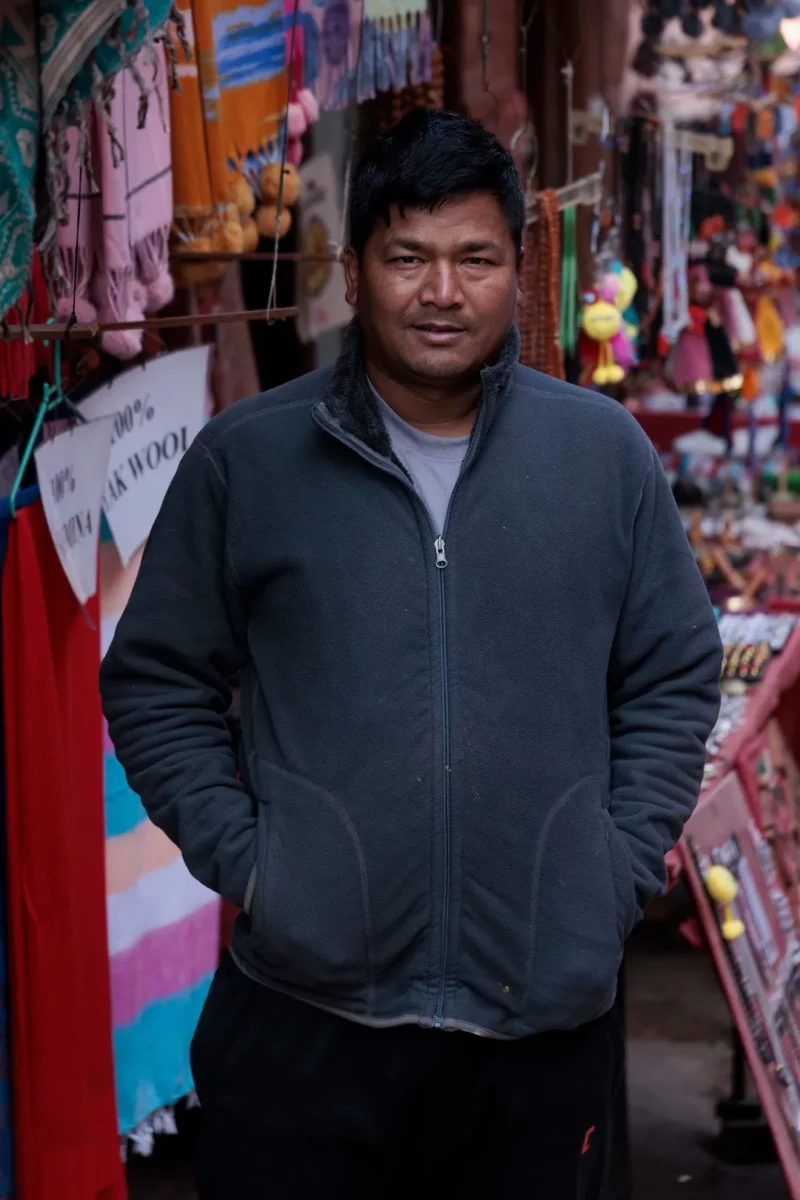
I made my way up the steep street, where I met Master Kamal and his brother Sanjay. I found a room in a homestay called The Nest, then we went for drinks in the local joint and agreed to start the class on the following day.
What’s a Thangka?
Thangkas are religious paintings that can depict deities and mandalas, a teaching tool and an aid for meditation. They are part of the Tibetan Buddhist tradition all over the Himalaya area of Tibet, India and Nepal. Traditionally painted by Lamas and Monks, these paintings moved from religious artefact to a more touristic souvenir. As a consequence, numerous Thangka and Mandala schools and workshops have opened around Kathmandu.
Master Kamal guided me during every step of the creation of my mandala. For 10 days I lived in the village, sharing tea and stories with him, his brother and the interesting crowd from The Nest: Livio and Lax, to name a few.
A goat name Khali, a day in the life around a Thangka Mandala school
Most days I woke up after sunrise, got dressed and climbed up the 108 steps of the stairs that separate the Nest from the temple. I walked around the temple clockwise and said hello to a young Goat that I named Khali.
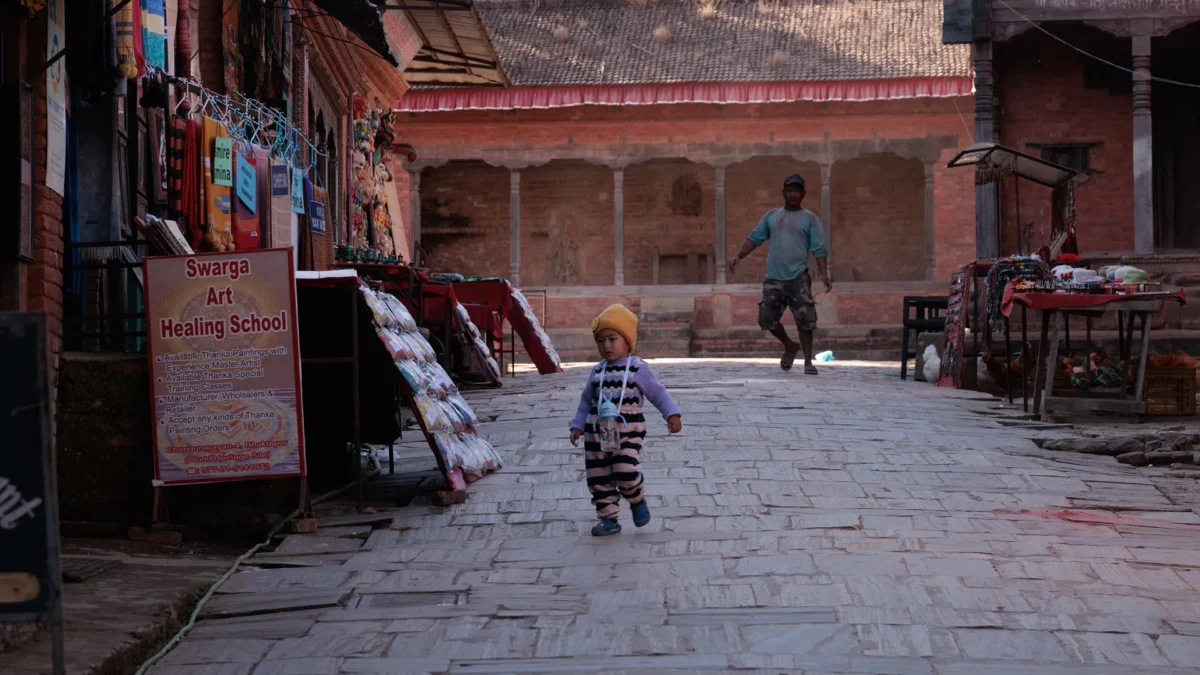
As I arrived at the school, an old radio would play ‘Om Mani Padme Hum’ in a loop. Kamal would greet me with a ‘let’s go have tea’. We’d meet his brother down at the village to share a tea and biscuit. After breakfast I would start working, he would occasionally check on me, giving me tips or correcting mistakes.
I picked a lotus mandala. It’s a really repetitive pattern, perfect for calming the mind. I worked approximately 6 hours per day. It took one day to make the canvas, another for the drawing and around 5 to do the colours.
Three times per day I would go eat Dal Bhat prepared by Suprhia, Sanjays’s wife. We ate in their small place, in the bedroom. Kamal and I sitting on a bed, Sanjay and his son sitting on the floor.
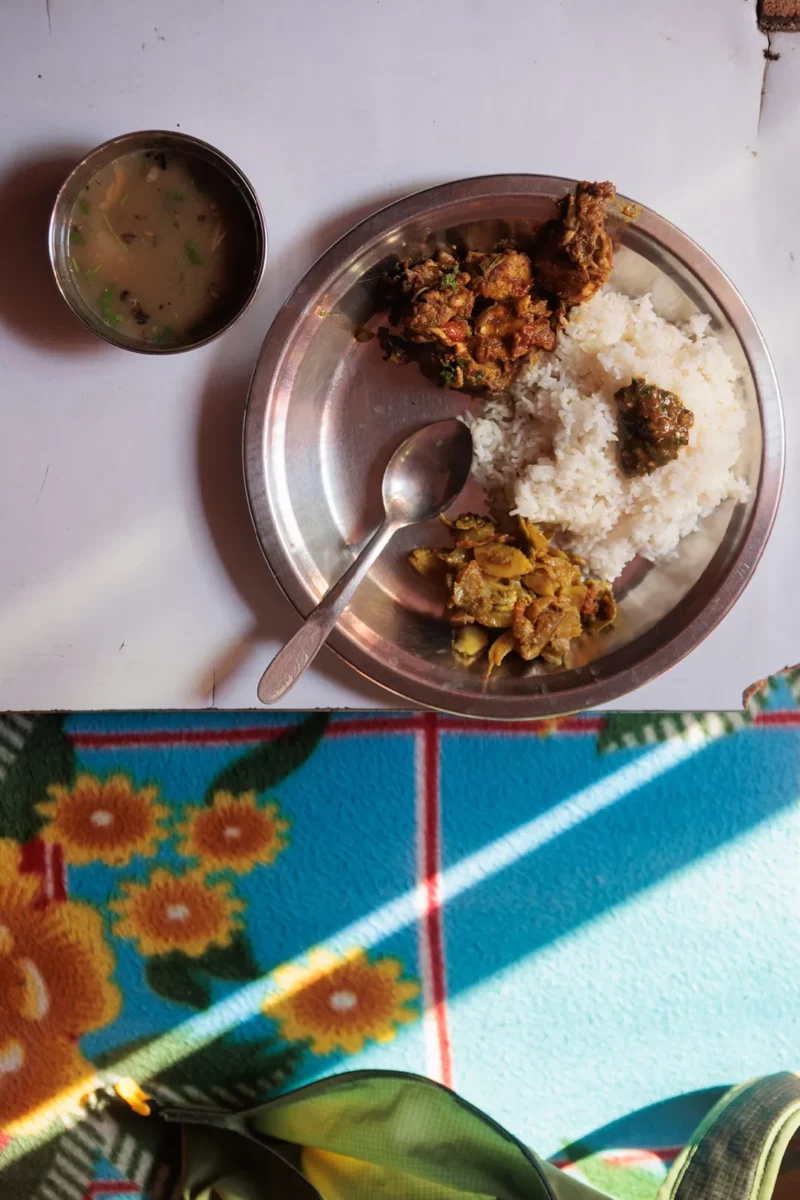
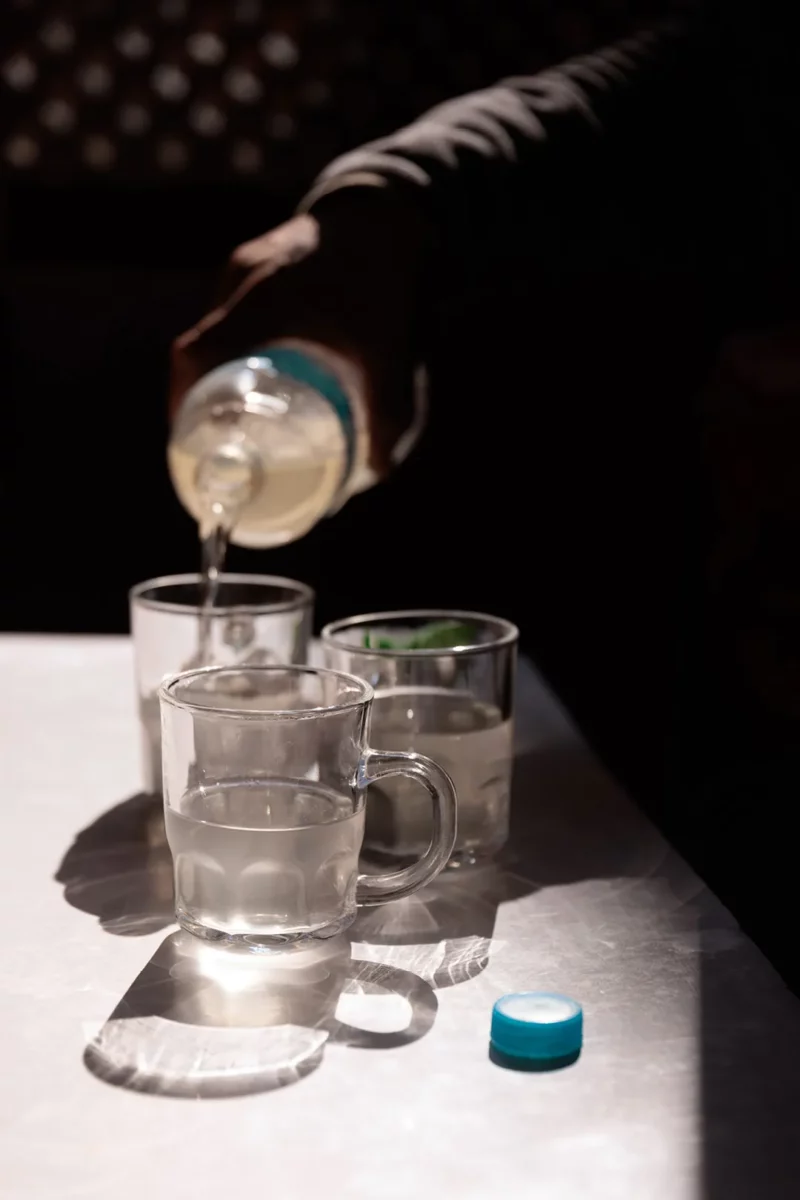
In the afternoon I would get a coffee, take a stroll to the temple, sit in the sun and check on Khali. I would find her eating the offerings, chewing with an innocent stare. Then I would paint a bit more, go change at the Nest before meeting Sanjay for some DIY booze and local aperitivo. After food I would go back home and most likely be in bed by 9 o’clock. I repeated the same day till the completion of my mandala.
The city of believers
Down the hill of Changu, lies the most densely populated city of Nepal, Bhaktapur. I took a day off to go visit it. In the afternoon the city is crowded with tourists and noisy shop keepers. But early in the morning, it’s a whole other story. Thousands of devotees walk from temple to temple, in one hand the hold a tray with water, rice, flower petals and pigments. With the other one they bless the statues they find in every shrine on their way. This concerto starts with the sun and lasts for several hours and doesn’t seem to have any conductor. I realised how Hinduism is still a religion of the people. I must say that the city deserves its name which literally translates to ‘the city of devotees’.
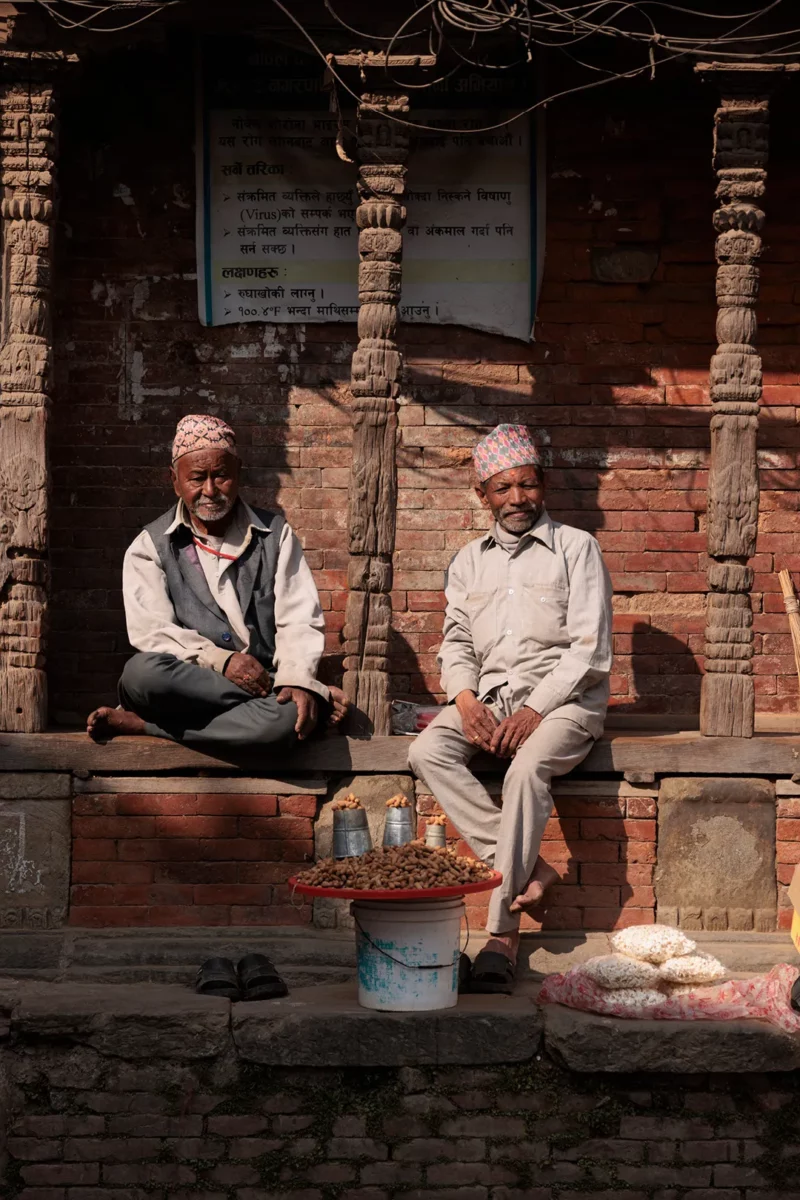
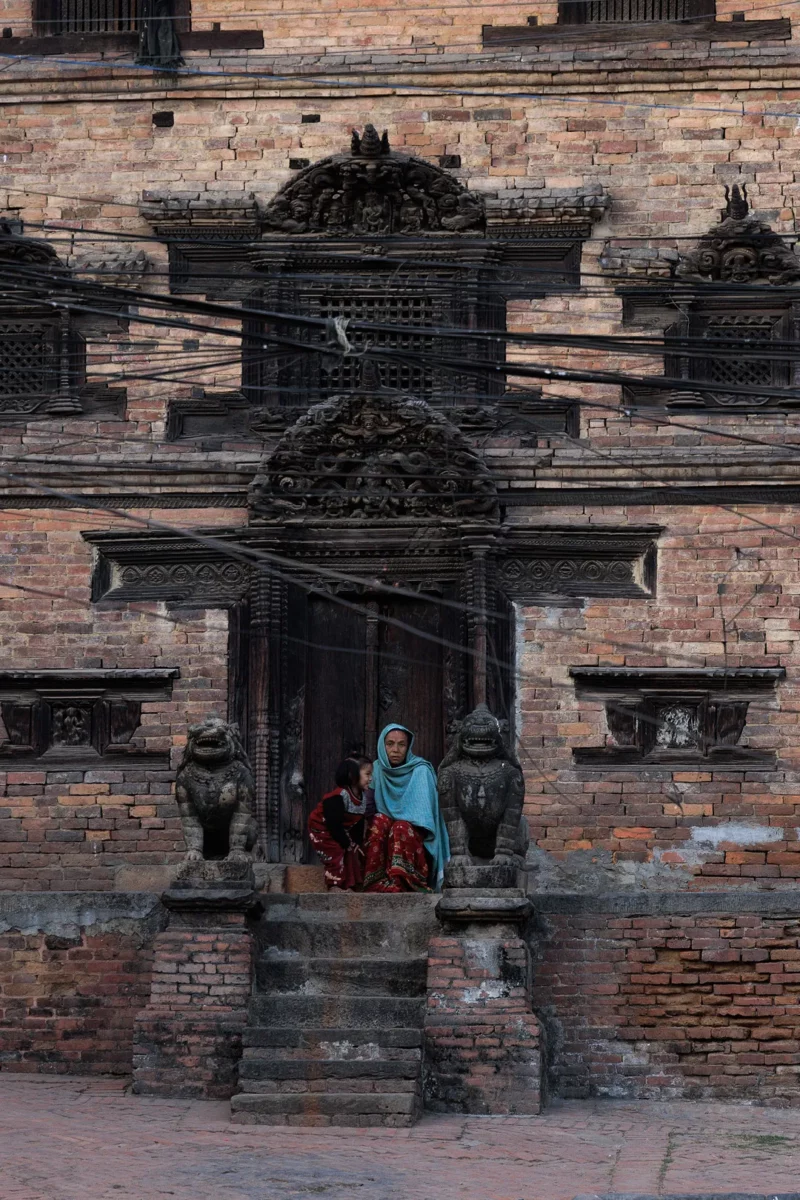
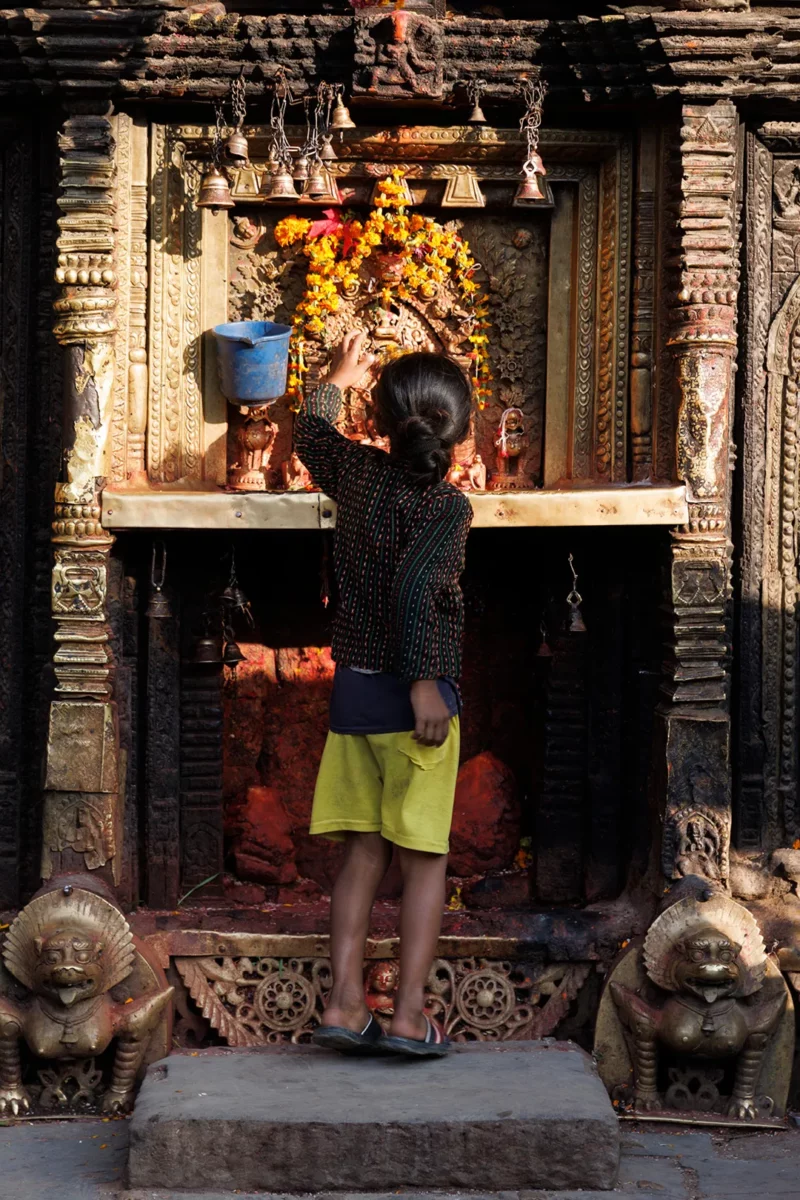
Animal sacrifice is still a big thing in Hinduism and animal blood is often used during Hindu puja. It’s not rare to see the head of a goat lying on the floor or someone killing a chicken in front of a Shiva altar. It made me think of Khali (the goat, not the goddess) and I wondered what her fate in the temple would be!
Sativa, sugary tea and Shiva
At the Nest I met Livio, from Sicily, who’s been travelling and living abroad for more than a decade. Livio seems to synch with the place where he’s living, going with the flow and being involved with the community. It was a pleasure to hang out, listen to his stories and learn about Nepal through the eyes of someone who’s been coming here for a while. One evening Livio talked about a Baba who lived in a tiny house on the hill nearby. The next morning we agreed to go to visit him.
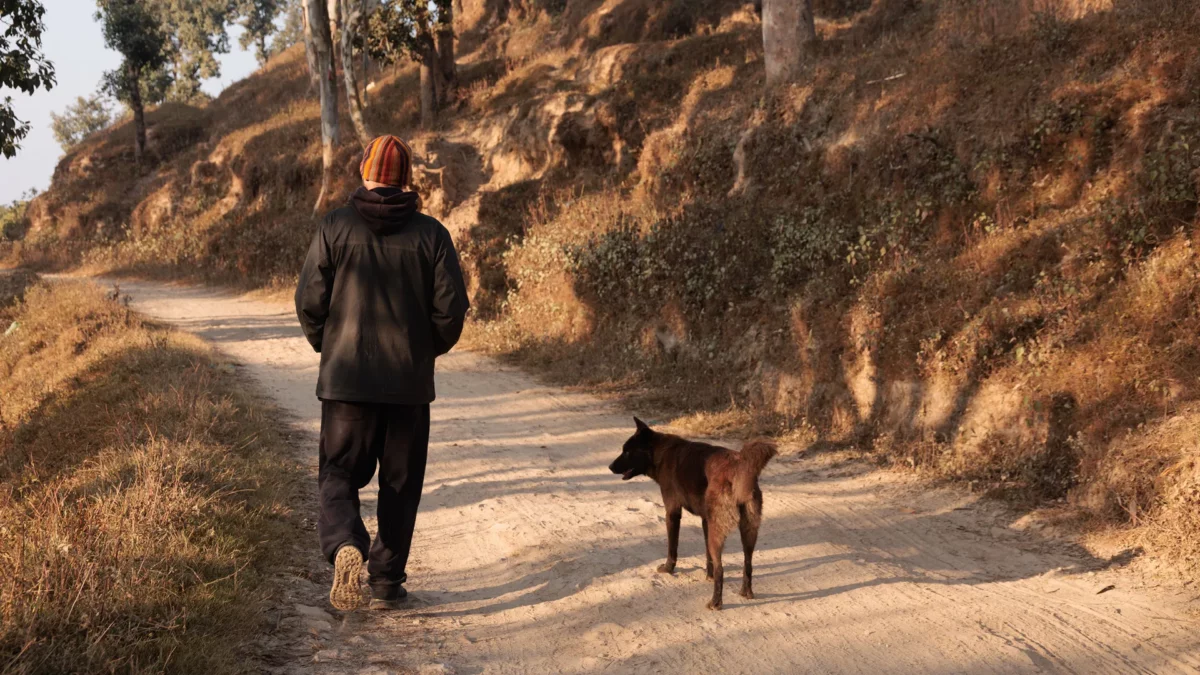
Baba means “father, grandfather, wise old man”. It is an honorific term of Persian origin. In many cultures it is as a sign of respect to use in reference to ascetics and holy men.
We left around 6 am and walked in the direction of the Sun. After a good hour of uphill walk, we arrived on the top. A couple of lonely dogs welcomed us. Livio walked casually toward the house and rang a huge bell similar to the one you can find next to the temple. A tiny figure with a long beard emerged from the house. After some greetings he invited us in, and in his beard mumbled “Tea?”! We both nodded and sat on the floor close to him.
The Baba’s way
I observed the tiny shed where our host started to make tea. A small fire pit on one side was filling the space with smoke. An electric stove on the other side was warming a pot of water. On the walls, photos of other holy men, a trident of shiva, and other artefacts. In the centre there was an altar. On it some incense, statues of Hindu Gods, a beautiful conch and a photo of the previous Baba who lived in the house.
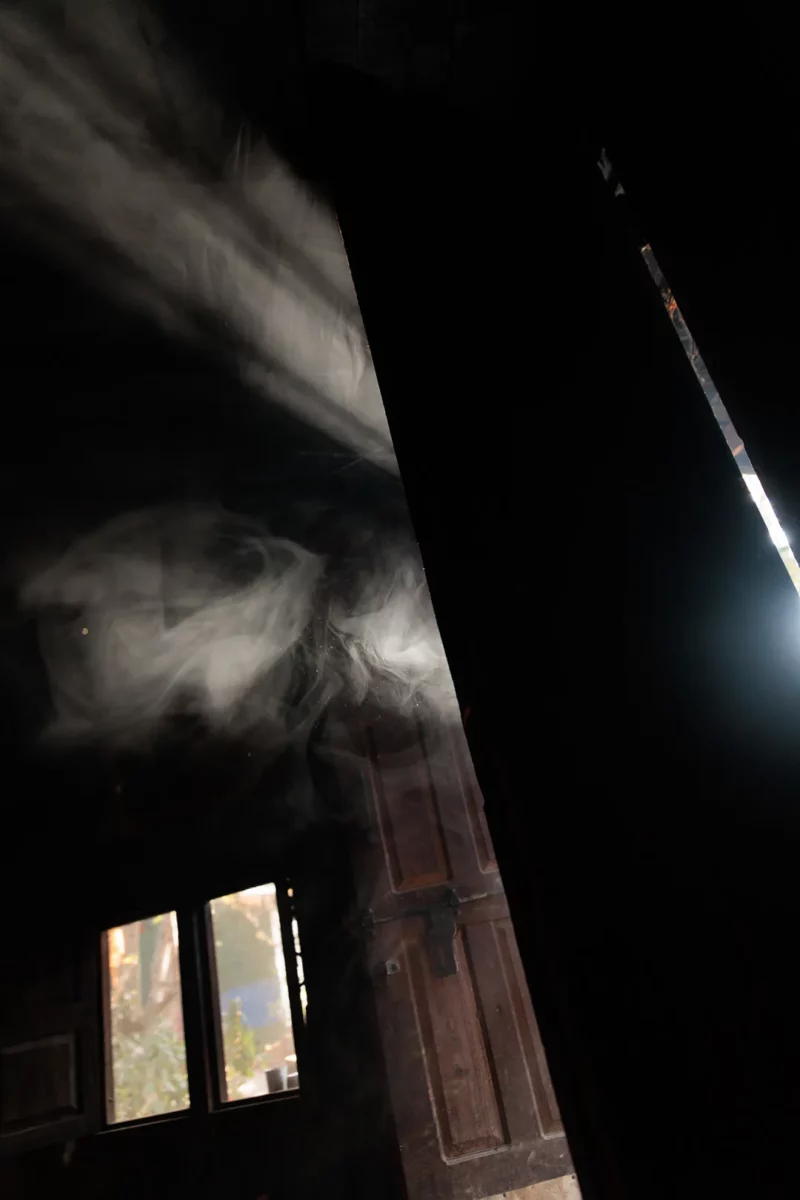
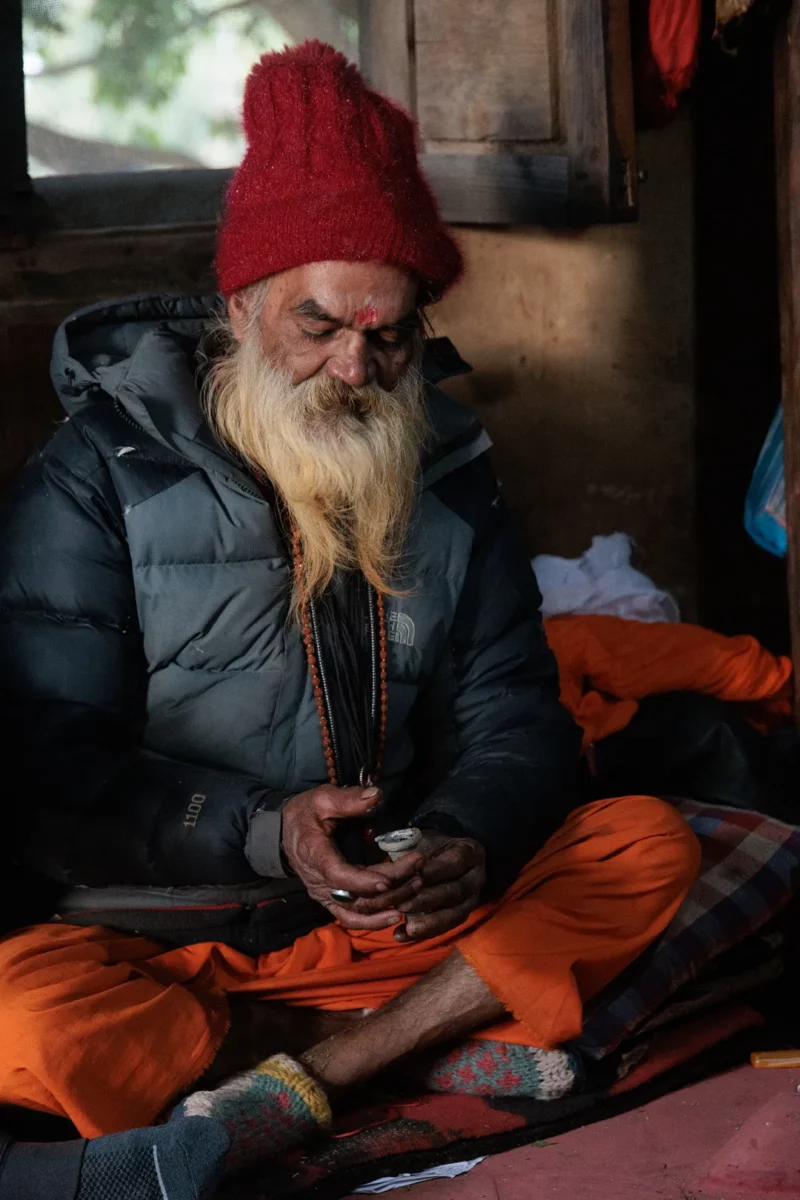
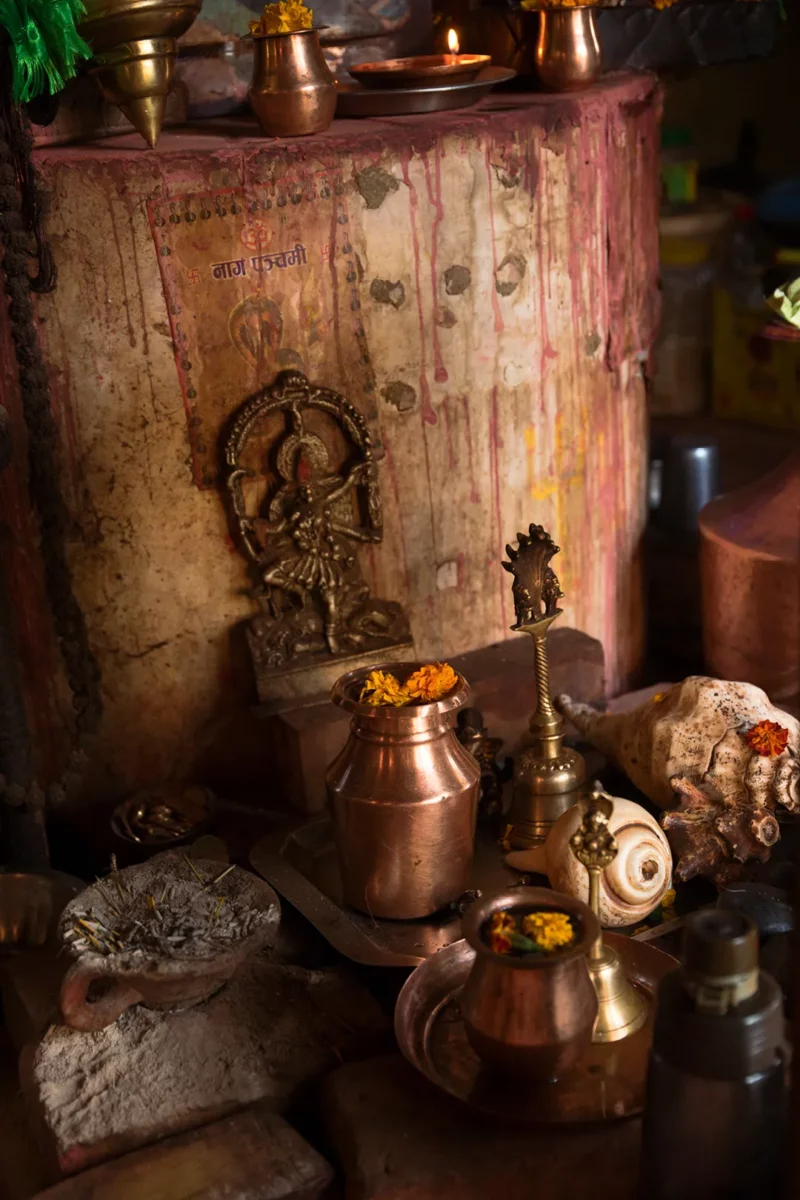
Seated with our overly sugary tea, the new baba prepared a chilam (the traditional smoking pipe), with pollen and weed. He repeated every movement with perfection, over and over. He threw weed in the fire for the Gods, ‘Om Nama Shiva’; then the chilam turned between the three of us. We talked a bit and were offered biscuits. The life of a baba is an interesting one, and I’m grateful for all the explanation that Livio provided. It is funny how his life is made of repetition, simple tasks done in a sacred manner. Every object in his home has a place.
A big hour later we left the tiny shack and said goodbye. The colours were more vibrant, the soil was made of cotton. Silently Livio and I made our descent back to Changu.
Memento mori
There is something weird about repetitions, they seem to follow me everywhere. Through repetition we are letting our mind relax. I entered a meditation state way before I finished painting my 256 blue petals, and I felt safe to know that my day was repeating itself slowly but surely. Maybe this is one of the teachings that this trip to Nepal has to offer. In our modern society we tend to fill our days with activities and tasks: the more things to do, the more our life is complete. But in Changu, I found something simpler, a reminder for a better life. Being fully present in the moment does not require different moments to be accomplished. I wonder if Khali would agree?
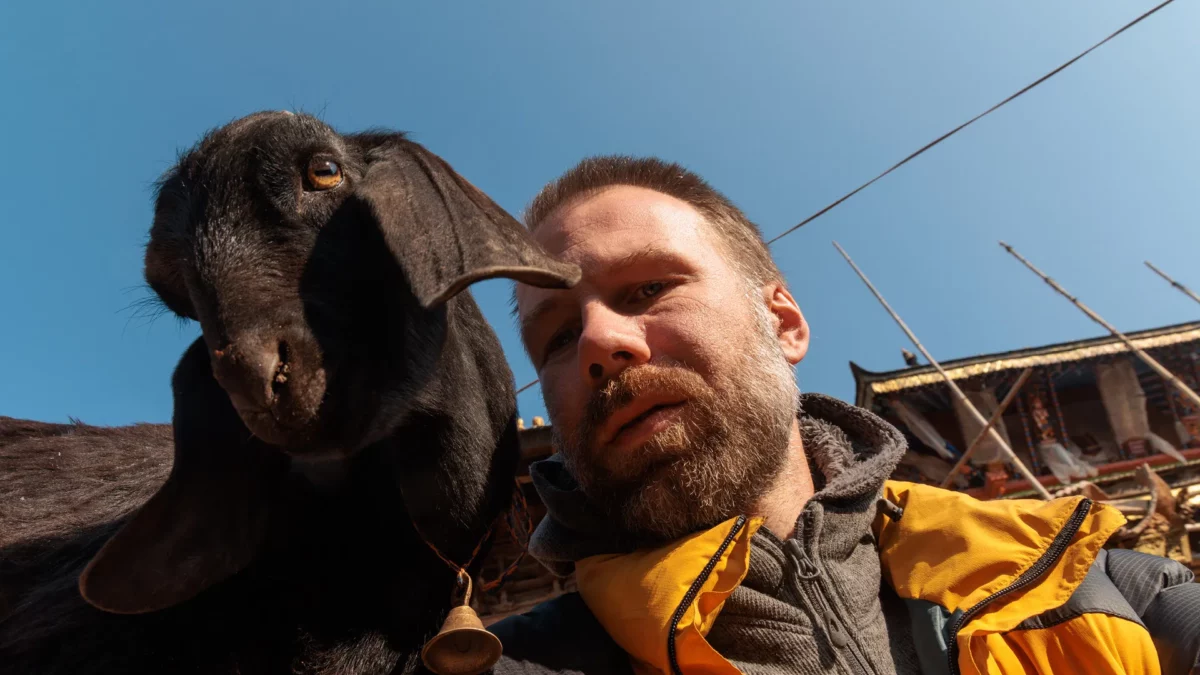
PS: I inquired about the faith of Khali the goat. It turns out that . I learned that at the temple they ask each animal if it will accept its fate. If the animal stays calm, it is sacrificed. If the animal shakes, it is released so it can live. Khali is safe and protected (and was pregnant the last time I visited the temple).


